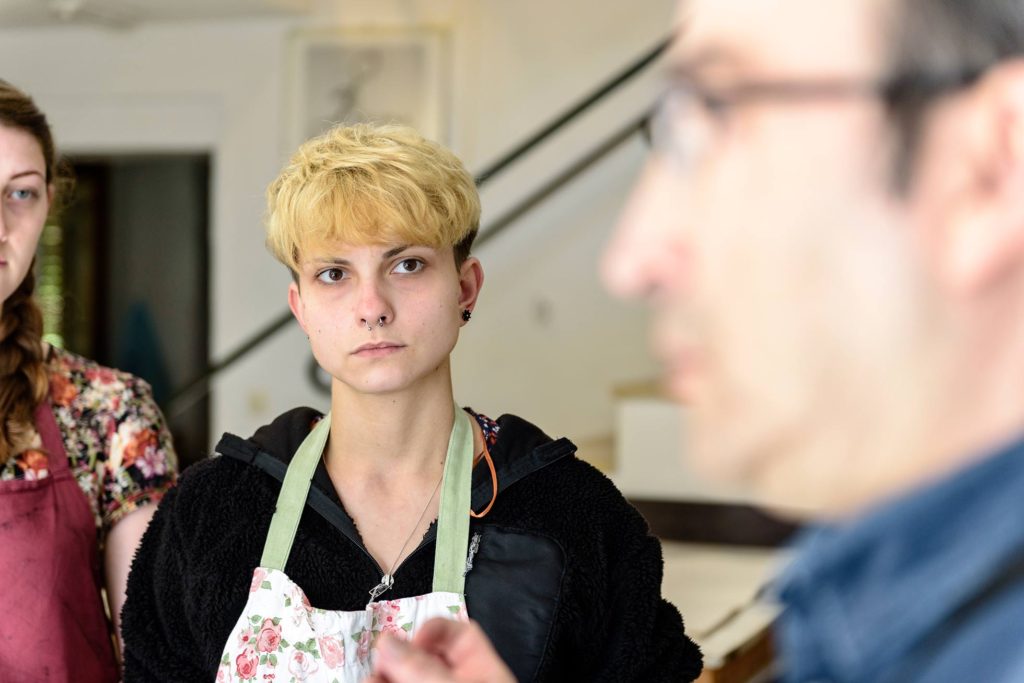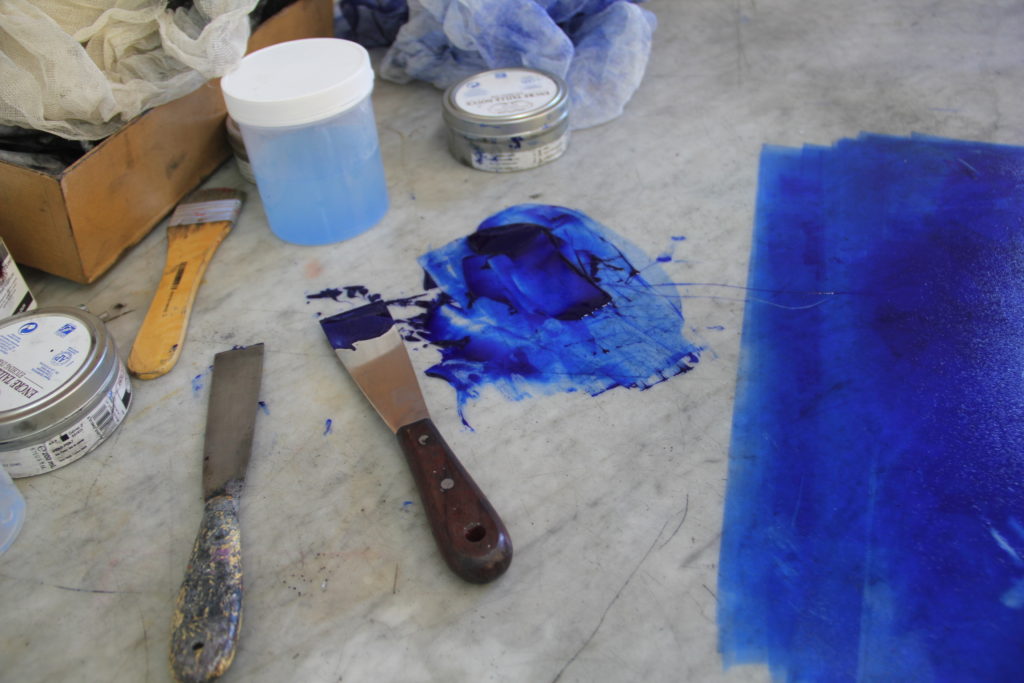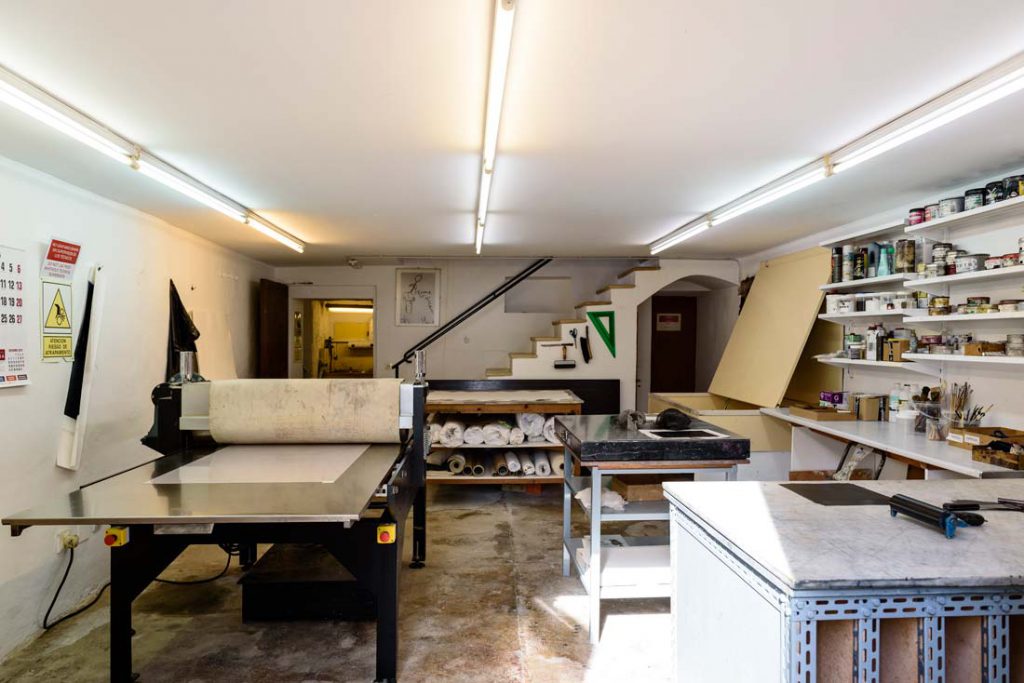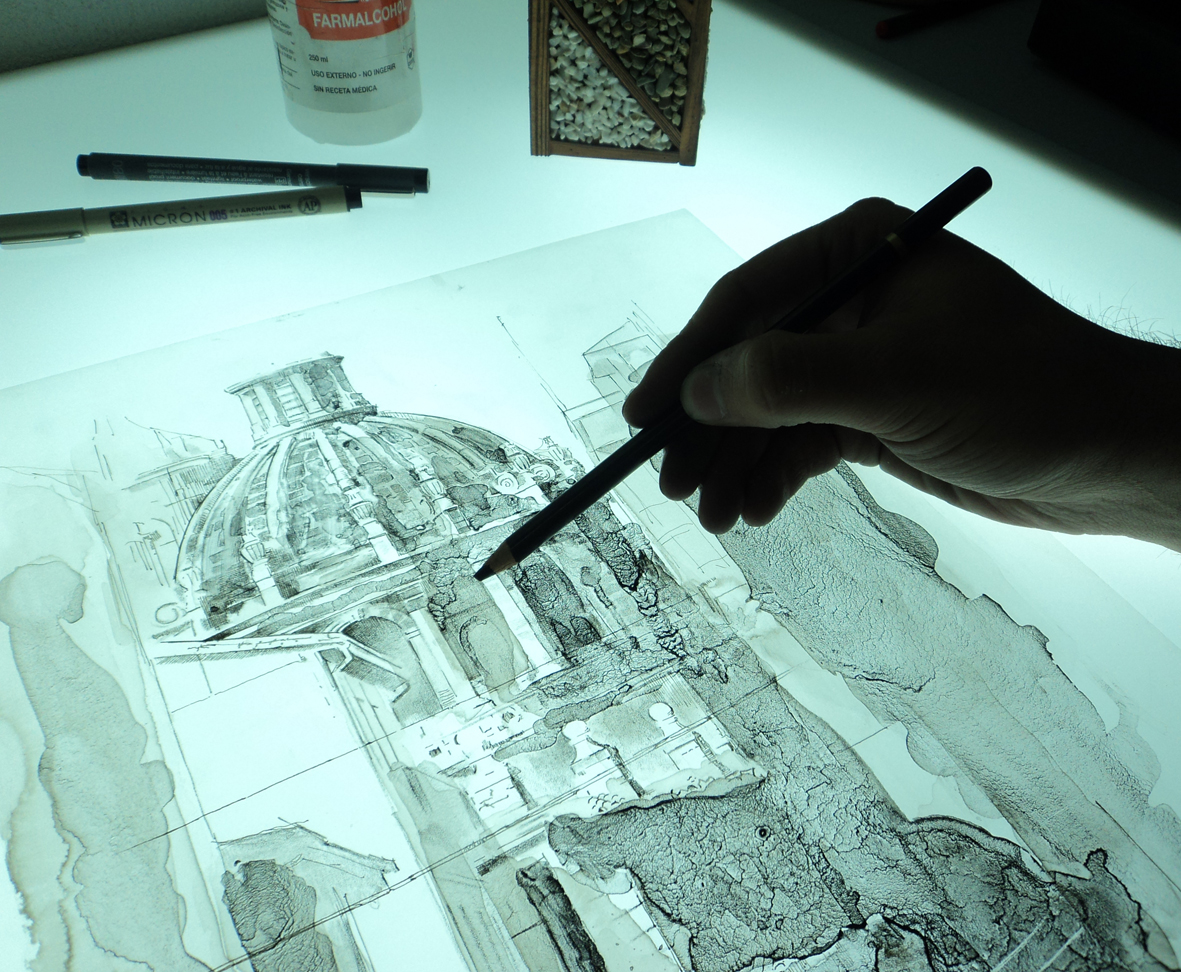
Joan Miró's Printmaking Workshops
- Photopolymer Workshop - "Engraving with photopolymer plates. Handmade and digital positives as creative supports"
Given by
- Ramón Freire
Dates
- June 16th to 21st 2025
Timetable
- From Monday to Friday 9 a.m – 3p.m.
- Saturday 10 a.m. – 2 p.m.
Maximum no. of students
- 12
Price
- 260€
Registration
Contact
T4/2025 Photopolymer Workshop
“Engraving with photopolymer plates. Handmade and digital positives as creative supports” given by Ramón Freire
Engraving with photopolymer plates is a versatile modern technique that combines the precision of photography with the beauty of traditional engraving, allowing artists and designers to create detailed, high-quality prints more easily while making less of an environmental impact.
Photopolymer plates have become a new matrix for the creation of engravings. The participants will be introduced to this new technique through a photomechanical process with multiple plastic and aesthetic possibilities, where the creative act takes pride of place.
This printing process, also known as photogravure, uses photopolymer matrices to create images. Photographic images and handmade ones (original drawings) can be reproduced with a multitude of finer details. Likewise, a huge tonal spectrum can be achieved through different drawing procedures, such as washes, pencil strokes, crayons, wax crayons or marker pens. Subtle nuances are possible that are very hard to achieve with any of the traditional engraving processes.
A knowledge and good command of all the parameters involved in this process are fundamental in order to use the technique properly and guarantee optimal results. At a tonal level, this is clearly the most important printmaking process in the history of engraving.
OBJECTIVES
● To show how photopolymer plates can be used as a matrix in engraving.
● To learn the basics needed to make an engraving with photopolymer plates.
● To find out the plastic and aesthetic possibilities that this procedure offers.
● To find out how handmade and digital positives can be used as creative supports.
● To explore concepts relating to density, exposure and photomechanical resources.
● To create photopolymer plates, with creativity as the common denominator.
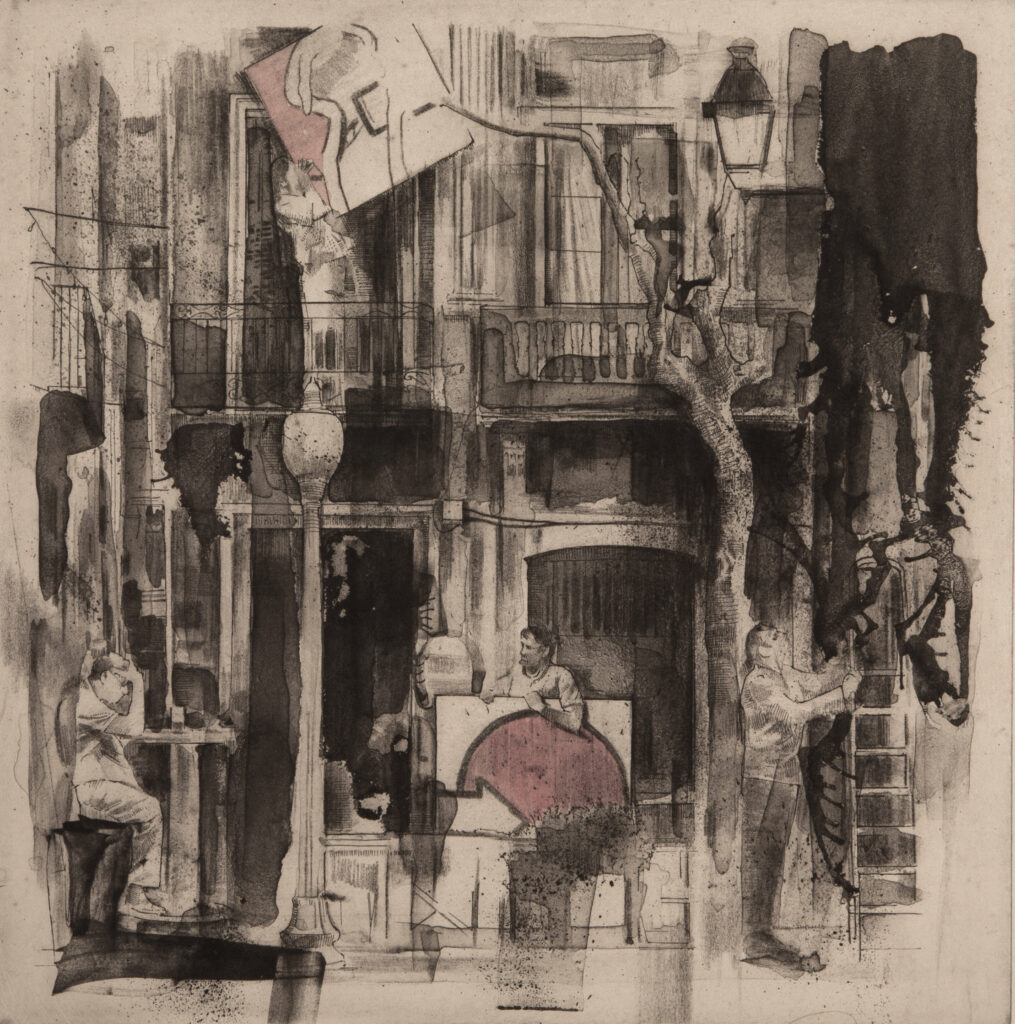
PROGRAMME
● An introduction to engraving with photopolymer plates.
● Photopolymer plates. General considerations.
● Types of positives. The source of exposure. The control and analysis of parameters involved in processing the matrix. The need for a screen. The screen: composition and systems.
● Handmade positives. Supports. Making a positive. Materials. Processing the matrix.
● Digital positives. Supports. Making a positive. The printing hardware. Adjusting the image prior to creating the positive. Processing the matrix.
● Inking and printing the matrix.
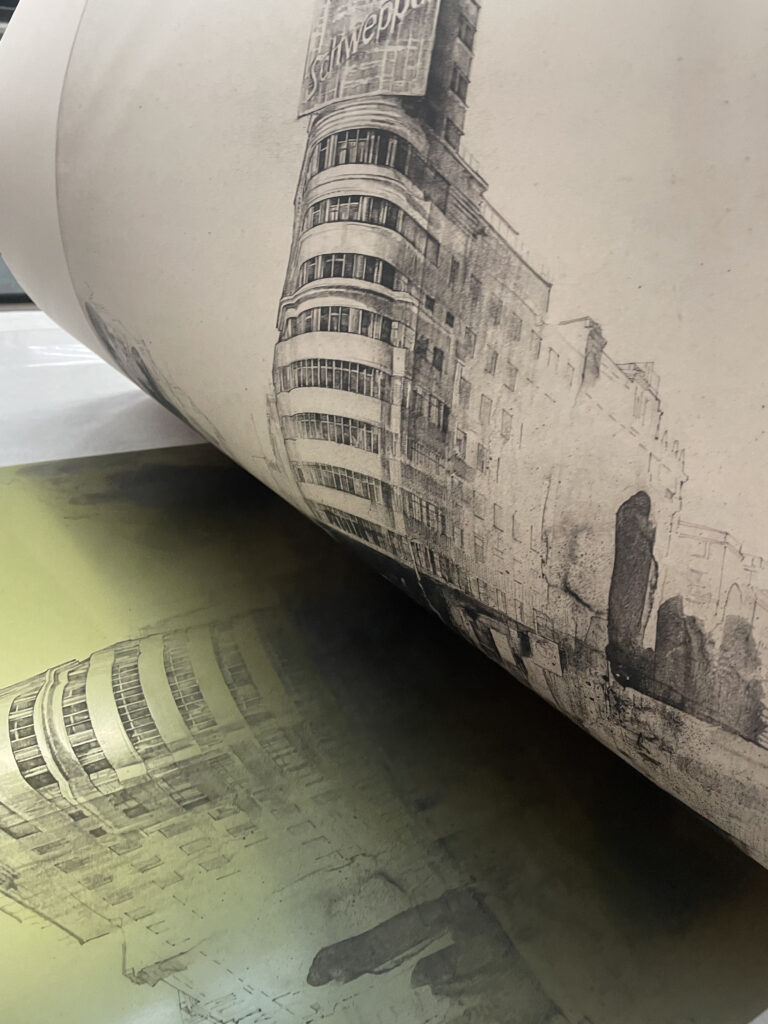
Ramón J. Freire Santa Cruz. Écija (Sevilla), 1980
A senior lecturer in engraving at Cuenca Faculty of Fine Art, attached to Castilla-La Mancha University, Ramón J. Freire Santa Cruz holds a PhD in Fine Art with a Doctor Europaeus distinction from Granada University. He is a PhD candidate at the Faculty of Humanities and Art History of the University of Jyväskylä (Finland).
Besides directing the M.A. in Engraving and Graphic Design at the Real Casa de la Moneda y Timbre (FNMT-UCLM), he is also the coordinator of the printmaking collection and Juana Mordó printmaking collection at Castilla-La Mancha’s Faculty of Fine Art.
At an academic level, he is involved in different research projects tied in with the field of artistic practice, relating specifically to engraving, photography, photomechanical procedures, new digital tools in the creation of matrices, and the search for engraving procedures that are less harmful to human beings and to the environment. He is also involved in the development and creation of inks made of natural products using red Grenache grapes, and he heads different related research projects with the participation of the University of Castilla-La Mancha and the private business sector.
A co-founder and chairman of the publishing initiative La Caja Grafa, Ramón J. Freire Santa Cruz combines his activities as an artist with teaching and research. He has received numerous grants from different centres and bodies in Spain and abroad for his research activities, which have revolved for years around engraving and new, less toxic procedures.
He has given numerous workshops, courses and talks in Spain and abroad on printmaking processes, such as engraving with photopolymer plates, lithography on polyester plates, cyanotype and different engraving techniques.
He is a research member of the Child Literature and Literary Education Research Group (LIEL), which heads an international forum for researchers working on the study, compilation, classification, analysis and dissemination of popular children’s literature. This group is currently engaged in a research project funded by Castilla-La Mancha Regional Ministry for Education, Culture and Sport entitled Body of popular children’s literature from Castilla-La Mancha (ref. SBPLY/17/180501/000453), whose objectives include the creation of a website in a text-based and audio-visual format which compiles orally handed down tales from the region for children and youths.
Since 2009, he has taken part in the HUM328 art research group, attached to Granada University, which investigates photomechanical procedures for relief engraving, specifically with photopolymer plates. To date, he has given different workshops, master classes, conferences, talks and specialist courses in these procedures, offering a broad insight into the process. In 2008, the Japanese multinational Toyobo S.L signed a collaboration agreement for the development of this research, funding the aforementioned project and acquiring the rights over its results.
As an artist, he has taken part in numerous joint and solo exhibitions in Spain and abroad and in different art projects in the fields of design, illustration, sculpture, painting and engraving. He has also worked closely on printed editions with La Zúa Printmaking Workshop (Cuenca), Finaestampa Editora (Granada) and at his own workshop.
His work can be found in public and private centres and organizations, including Huafan University, Taipei, (Taiwan); Corkprintmaker (Ireland); Honor Meyers College, Ohio (USA); Jyväskylä Centre of Printmaking (Finland); HIAP (Helsinki); the CAAC collection, Castilla-La Mancha University; the Drawing Department of Granada University; the contemporary art collection of Granada University; Seville School of Arts & Crafts; the Chile Pavilion, Urbino Town Council (Italy); the Antonio Pérez Foundation’s Contemporary Art Centre, Cuenca; the CIEC Foundation, the Centro Internacional de la Estampa Contemporánea, Betanzos (Galicia); Castilla-La Mancha University; Vilnius Fine Art Academy (Lithuania); Poznan Fine Art Academy (Poland); ISA, Havana (Cuba), and Lodz Academy of Humanities and Economics (Poland), among others.



